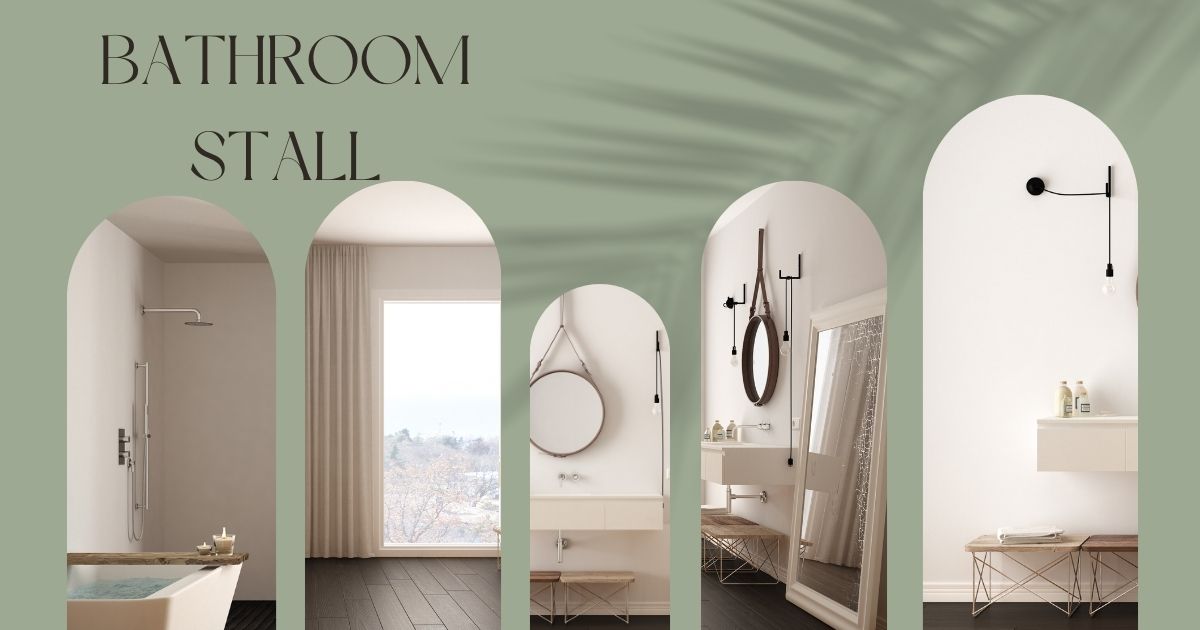A bathroom stall is a fundamental part of public and private restrooms, ensuring privacy and functionality for users. These enclosures vary in size, material, and design, serving different settings such as offices, malls, schools, and airports. In this article, we’ll explore the different aspects of bathroom stalls, including their construction, privacy features, maintenance, and evolving designs.
Understanding Bathroom Stall Design
Bathroom stalls are designed with user convenience and space efficiency in mind. The layout of a restroom must allow easy movement while maintaining sufficient privacy. Stall configurations depend on available space, accessibility standards, and expected foot traffic.
Types of Bathroom Stalls
Bathroom stalls come in different types to fit various needs. Standard stalls are the most common, while ADA-compliant stalls are larger to accommodate wheelchairs. There are also full-height stalls that provide maximum privacy and compact stalls designed for tight spaces.
Materials Used in Bathroom Stalls
The choice of materials impacts the durability and maintenance of bathroom stalls. Common materials include powder-coated steel, solid plastic, stainless steel, and laminate. Each material has its benefits—stainless steel offers durability, while plastic resists moisture and corrosion.
Privacy Concerns in Bathroom Stalls
Privacy is a major concern in public restrooms. Many stalls have gaps at the bottom and top, which can cause discomfort for users. High-privacy stalls, designed with minimal gaps and full-length doors, are becoming popular in modern facilities.
Standard Stall Dimensions
Bathroom stall dimensions vary based on regulations and location. Standard stalls are usually around 36 inches wide, while ADA-compliant stalls must be at least 60 inches wide to provide enough space for wheelchair users. The stall height ranges from 55 to 75 inches, depending on the design.
ADA Compliance and Accessibility
Public restrooms must adhere to the Americans with Disabilities Act (ADA) to ensure accessibility for all users. ADA-compliant stalls must have wider doors, grab bars, and enough turning space for wheelchair users. These features improve restroom inclusivity.
Common Problems with Bathroom Stalls
Bathroom stalls often face issues like broken locks, graffiti, and poor sanitation. Weak door hinges and low-quality partitions can lead to frequent repairs. Choosing durable materials and performing regular maintenance can help extend the stall’s lifespan.
Maintenance and Cleaning Tips
Keeping bathroom stalls clean is essential for hygiene and user comfort. Regular cleaning with disinfectants prevents bacteria buildup. Checking locks, hinges, and partitions for damage ensures that stalls remain functional and secure.
Cost of Installing Bathroom Stalls
The cost of bathroom stalls varies based on material, size, and installation requirements. A standard metal stall may cost around $300 to $800 per unit, while high-end stainless steel or solid plastic stalls can exceed $1,000. Installation costs depend on complexity and labor.
Innovative Bathroom Stall Designs
Modern bathroom stalls now incorporate advanced designs, such as sensor-activated doors and soundproof panels. Some facilities opt for fully enclosed stalls to improve privacy and user experience, moving away from traditional open-bottom designs.
Environmental Considerations
Sustainable bathroom stalls use recycled materials and eco-friendly finishes. Many manufacturers now create partitions from reclaimed wood or plastic, reducing waste while maintaining durability. Water-saving toilets and motion-sensor faucets further enhance sustainability.
Cultural Differences in Bathroom Stall Designs
Bathroom stall designs vary worldwide. In some countries, fully enclosed stalls are the norm, while in others, open-bottom stalls are more common. Cultural expectations influence stall height, door coverage, and accessibility standards.
Safety Features in Bathroom Stalls
Safety is crucial in bathroom stalls, particularly in schools and public spaces. Rounded corners, anti-slip flooring, and emergency access features help prevent accidents. Proper lighting and security measures also improve safety for users.
Future Trends in Bathroom Stalls
The future of bathroom stalls focuses on smart technology and enhanced privacy. Some stalls now feature occupancy indicators, automatic door locks, and antibacterial surfaces. These innovations improve user comfort and restroom efficiency.
Conclusion
Bathroom stalls play an essential role in public and private restrooms, offering privacy, accessibility, and convenience. Proper material selection, maintenance, and innovative designs ensure their longevity and functionality. As restroom technology advances, we can expect smarter and more user-friendly bathroom stalls.
FAQs
What is the ideal height for a bathroom stall?
Most stalls range from 55 to 75 inches in height, with high-privacy options extending to full height.
Why do bathroom stalls have gaps at the bottom?
Gaps improve ventilation, allow for easy cleaning, and enhance security by preventing total enclosure.
How often should bathroom stalls be cleaned?
Daily cleaning is recommended in high-traffic areas, while deep cleaning should be done weekly.
What materials last the longest for bathroom stalls?
Stainless steel and solid plastic are highly durable and resistant to moisture and corrosion.
How can bathroom stalls be made more eco-friendly?
Using recycled materials, water-saving fixtures, and non-toxic coatings can make stalls more sustainable.











